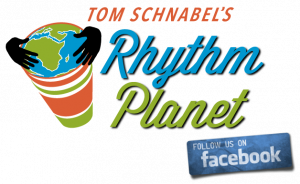I’ve enjoyed Indian music ever since the 1960s, with early lp’s from Ravi Shankar and Ali Akbar Khan, two great musicians who did more to spread the art form than anybody else: Ravi by experimenting and touring and his association with George Harrison; Khan through his school in the Bay area. By the way, Ali Akbar Khan’s father Babaallaudin was Ravi’s teacher. It was the beloved and revered “Baba” who convinced Ravi as a young dandy, traveling the world on luxury liners with his older brother Uday’s dance company, living in Paris among the expats, Picasso, Cocteau and the smart set, to return to India, leaving it all the luxury and glamor behind and practicing 8-10 hours a day for roughly ten years.
There is nothing like the discipleship of Indian music. It’s been passed on from master to disciple since the time of Tansen, back in the 16th century. In the documentary film Raga, Ravi Shankar returns to the village of his guru, Baba Allaudin Khan, and upon encountering him drops to the ground, kissing the master’s feet in supplication and reverance.
Raga means “color” or “form” in sanskrit. Many of its elements were laid out by a 16th century musician named Tansen. In the 18th century J.S. Bach perfected the “circle of fifths”, which laid out the structure of chromatic harmony in Western classical music. Tansen was doing this for Indian classical music 100 years earlier.
Raga is the classical Hindustani musical form. There are no chords or harmonies like we have in Western music. The music is modal in that the featured instrument is playing notes and scales against the repeated drone of the tanbura, which looks like small sitar. There are many complex scales–as many as 26 notes per octave–Indian music is made up of what are called microtones. Whereas Western music has 12 notes in a chromatic scale octave, Indian music has 26 or more in the same octave. These are the notes “between the notes” we know of when we look at piano keys. Sitars and sarods have gourd resonators at the bottom and smaller ones on the neck, which is larger to accommodate the many strings and sympathetic strings of the instruments. It takes strong hands and forearms to play them.
Raga is a sensual music, much more so than many Western classical compositions. It reminds me of Temple drawings and sculpture, where lovers are not just kissing but French-kissing. There are morning ragas, evening ragas, romantic ragas. The first part is called the alap: it is slow and features the sitar or sarod with the drone instrument, the tanbura. The tabla usually appears about half-way through the raga and builds to an explosive climax. Ragas are typically around the same length as concertos and symphonies: around 30′-60′ long. For example, see Ali Akbar Khan’s The 80 Minute Raga.
For those who live in LA, I recommend visiting the Music Circle website. The Music Circle was founded in 1966 by Ravi Shankar and the late Harihar Rao. They present excellent concerts of Indian classical music, often at Herrick Chapel at Occidental College. Everybody sits on the floor and takes it all in. So does Paul Livingstone, who founded the Sangeet School of World Music.
The featured raga on this week’s program features the great sitar player Imrat Khan, working with his two sons, Vajahat on sarod and Shafaatullah on tablas.
Here Ravi Shankar talks about raga.
Additionally, shown here is a tutorial by LA resident and teacher Paul Livinstone.
Rhythm Planet Playlist: 6/21/13
- Ravi Shankar | An Introduction To Indian Music | The Essential Ravi Shankar | Columbia Legacy
- Ravi Shankar | East Meets West circa 1967 | Nine Decades | East Meets West Music
- Ravi Shankar | Tana Mana | Tana Mana | Private Music
- Anoushka Shankar | Kanya | Traveller | Deutsche Grammophon
- Amjad Ali Hhan | Vignaraja | Moksha | Real World
- Imrat Khan| Rag Jhinjhoti | Rag Jhinhoti & Rag Pilu | Nimbus



